Abstract
This article describes the relationship between fiber biopersistence and the chronic toxicity of different chemical compositions of man-made vitreous fibers (MMVF) in the lung. Rats were exposed in "nose-only" inhalation chambers, 6 hr/day, 5 days/week, for 24 months to aerosol concentrations of 30 mg/m3 containing comparable fiber numbers and similar dimensions of fibrous glass (FG) or refractory ceramic fiber (RCF). Interim sacrifices were performed periodically to monitor fiber number and dimensions in the lung and the progression of pulmonary alterations. At each interim sacrifice, three to six recovery animals were removed from each exposure group and held until two years to determine the biopersistence of fibers after different exposure times. Fibers were recovered from the ashed lungs, counted, and measured using optical and scanning electron microscopy (SEM). Fiber chemistry was assessed in 91-week recovery lungs using energy dispersive spectroscopy (EDS) analysis. RCF induced lung fibrosis and an elevation in lung tumors and pleural mesotheliomas. FG exposure resulted in no lung fibrosis, no statistically significant increase in the lung tumor incidence, and no mesotheliomas. After two years of continuous exposure, the number of World Health Organization fibers per milligram dry lung recovered from RCF and FG exposed lungs was comparable. EDS analysis of recovery lungs showed that most of the alkalis and alkaline earths had leached from the FG fibers over time. A slight change in RCF chemistry was observed. These findings indicate that the change in the chemical composition of fibers may be an important determinant of the chronic toxicity of MMVFs.
Full text
PDF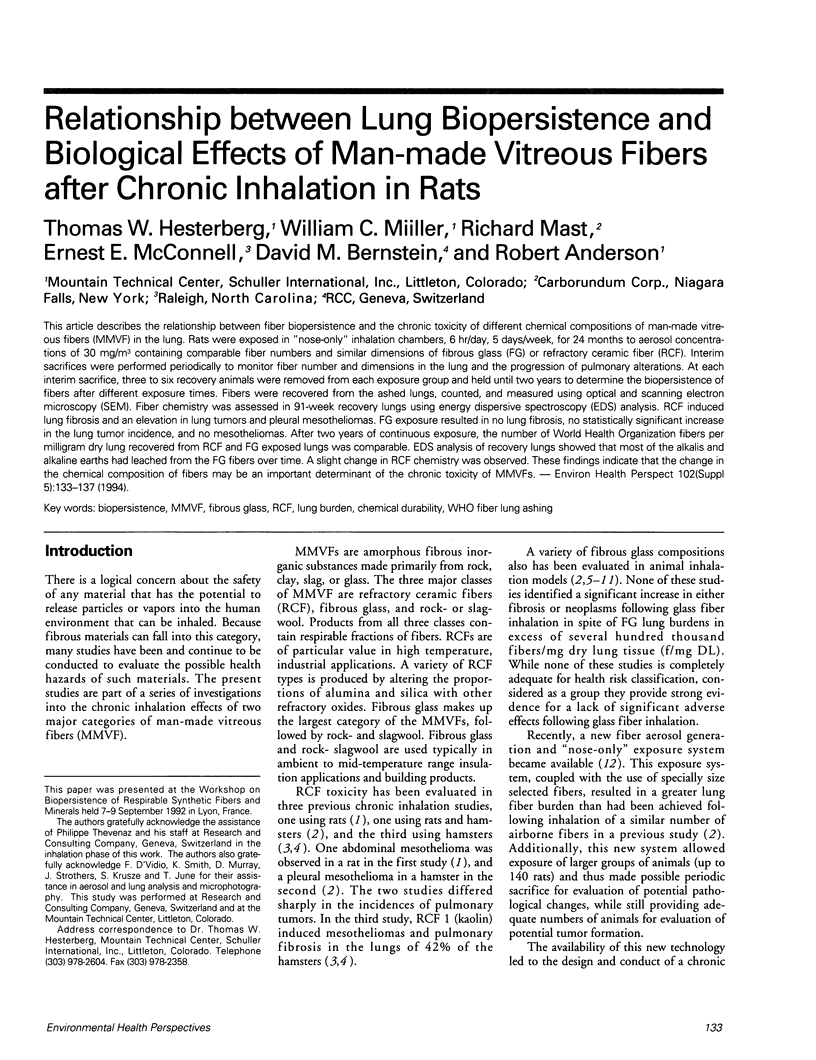
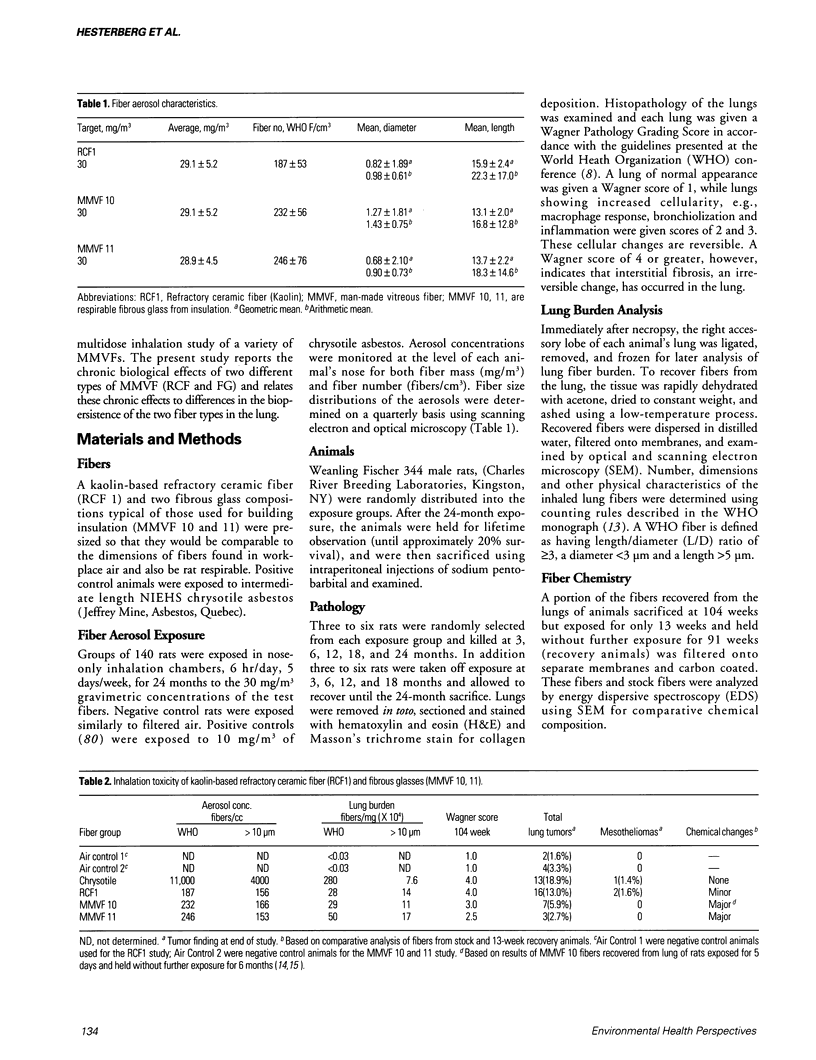
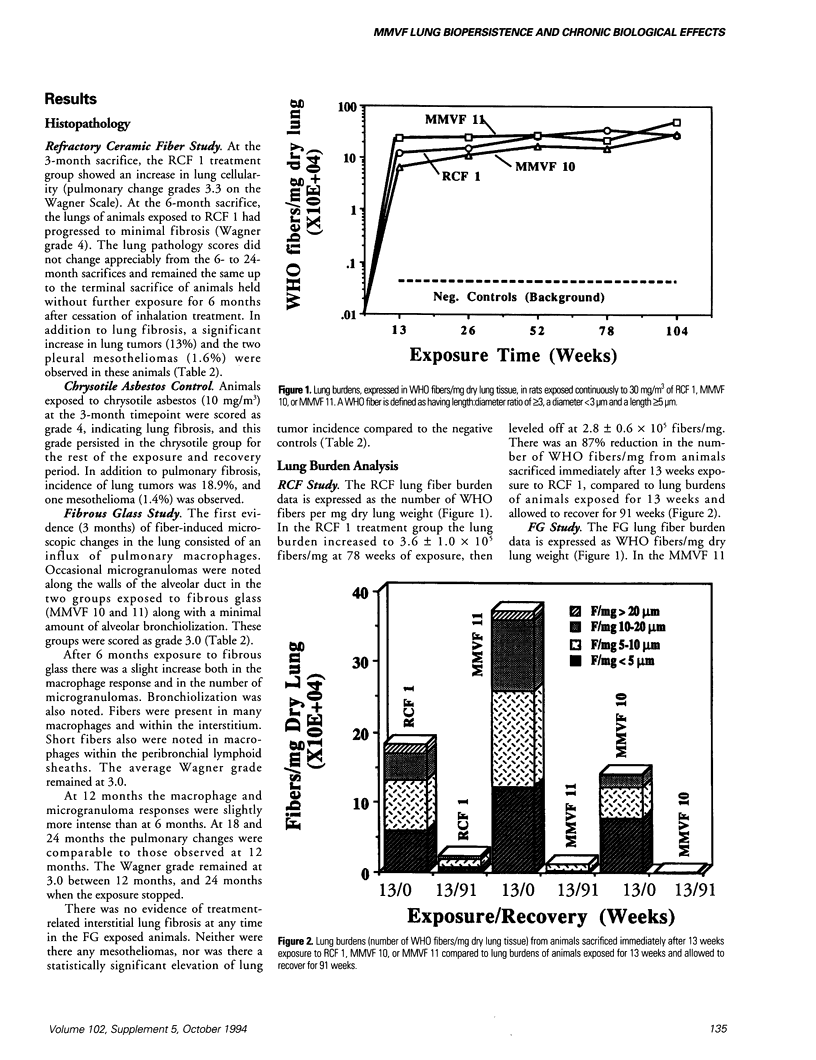
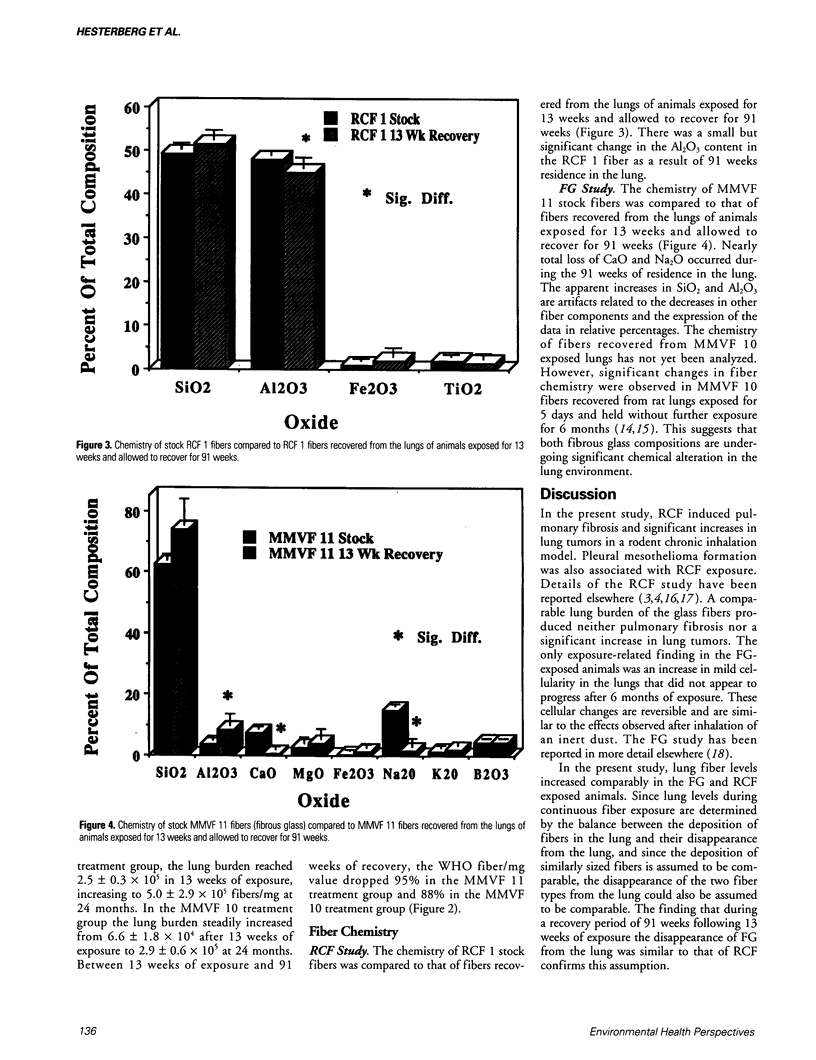
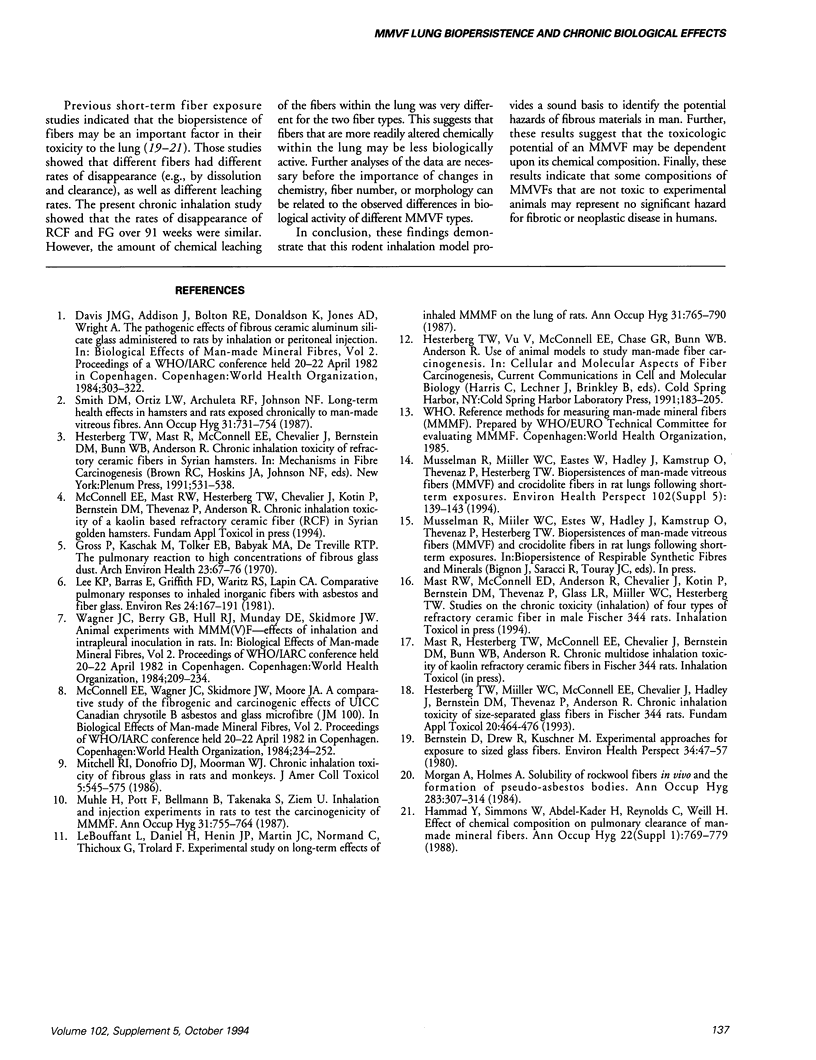
Selected References
These references are in PubMed. This may not be the complete list of references from this article.
- Bernstein D. M., Drew R. T., Kuschner M. Experimental approaches for exposure to sized glass fibers. Environ Health Perspect. 1980 Feb;34:47–57. doi: 10.1289/ehp.803447. [DOI] [PMC free article] [PubMed] [Google Scholar]
- Gross P., Tuma J., DeTreville R. T. Lungs of workers exposed to fiber glass. A study of their pathologic changes and their dust content. Arch Environ Health. 1971 Jul;23(1):67–76. doi: 10.1080/00039896.1971.10665957. [DOI] [PubMed] [Google Scholar]
- Hesterberg T. W., Miiller W. C., McConnell E. E., Chevalier J., Hadley J. G., Bernstein D. M., Thevenaz P., Anderson R. Chronic inhalation toxicity of size-separated glass fibers in Fischer 344 rats. Fundam Appl Toxicol. 1993 May;20(4):464–476. doi: 10.1006/faat.1993.1057. [DOI] [PubMed] [Google Scholar]
- Le Bouffant L., Daniel H., Henin J. P., Martin J. C., Normand C., Tichoux G., Trolard F. Experimental study on long-term effects of inhaled MMMF on the lungs of rats. Ann Occup Hyg. 1987;31(4B):765–790. doi: 10.1093/annhyg/31.4b.765. [DOI] [PubMed] [Google Scholar]
- Lee K. P., Barras C. E., Griffith F. D., Waritz R. S., Lapin C. A. Comparative pulmonary responses to inhaled inorganic fibers with asbestos and fiberglass. Environ Res. 1981 Feb;24(1):167–191. doi: 10.1016/0013-9351(81)90143-2. [DOI] [PubMed] [Google Scholar]
- Morgan A., Holmes A. Solubility of rockwool fibres in vivo and the formation of pseudo-asbestos bodies. Ann Occup Hyg. 1984;28(3):307–314. doi: 10.1093/annhyg/28.3.307. [DOI] [PubMed] [Google Scholar]
- Muhle H., Pott F., Bellmann B., Takenaka S., Ziem U. Inhalation and injection experiments in rats to test the carcinogenicity of MMMF. Ann Occup Hyg. 1987;31(4B):755–764. doi: 10.1093/annhyg/31.4b.755. [DOI] [PubMed] [Google Scholar]
- Musselman R. P., Miiller W. C., Eastes W., Hadley J. G., Kamstrup O., Thevenaz P., Hesterberg T. W. Biopersistences of man-made vitreous fibers and crocidolite fibers in rat lungs following short-term exposures. Environ Health Perspect. 1994 Oct;102 (Suppl 5):139–143. doi: 10.1289/ehp.94102s5139. [DOI] [PMC free article] [PubMed] [Google Scholar]
- Smith D. M., Ortiz L. W., Archuleta R. F., Johnson N. F. Long-term health effects in hamsters and rats exposed chronically to man-made vitreous fibres. Ann Occup Hyg. 1987;31(4B):731–754. doi: 10.1093/annhyg/31.4b.731. [DOI] [PubMed] [Google Scholar]


